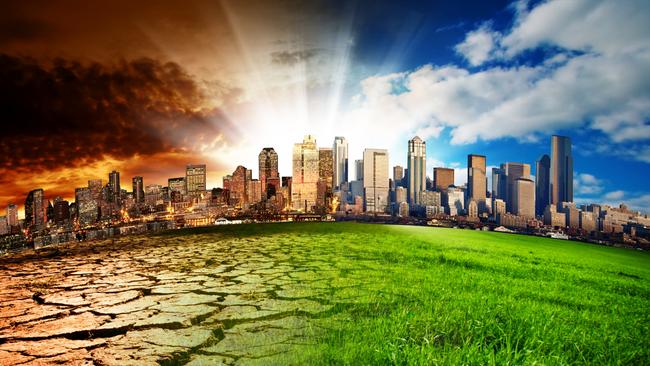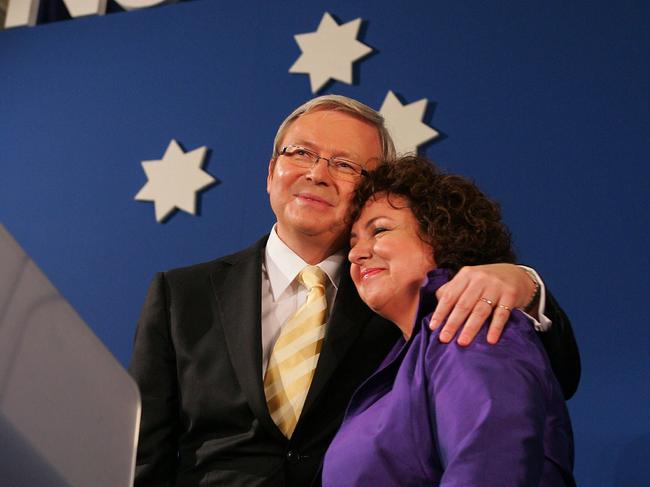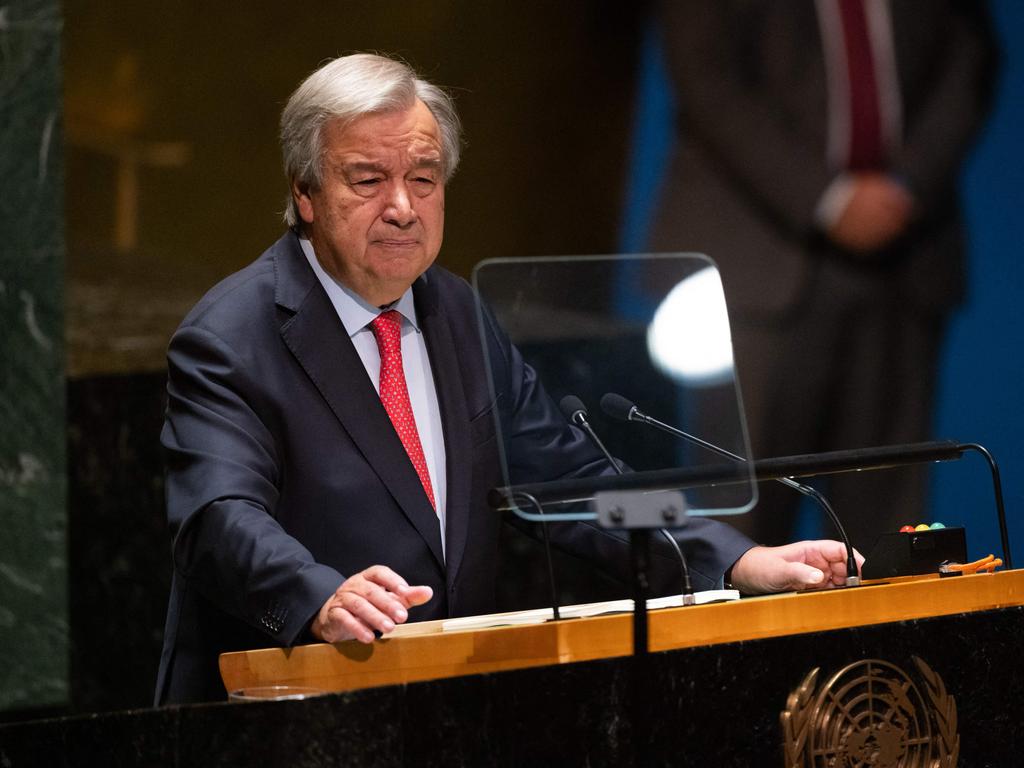
We are, for example, told that if global warming continues unabated, our homes will be consumed in flames, as uncontrollable blazes scorch the continent. “Humanity has opened the gates to hell,” proclaimed United Nations Secretary-General Antonio Guterres just this week.
Yet we are also assured that so long as Australia’s “energy transition” is accelerated, we will somehow escape the cataclysm, regardless, it seems, of what is done by the world’s largest emitters.
Equally, in the current referendum, the Yes case claims defeat would lead to dreadful consequences: “the gap” would widen; relations between Indigenous and non-Indigenous Australians would forever sour; the world would shun us as red-necked bigots.
But were this “generous and modest” proposal accepted, the effects would be “truly transformational”: Indigenous kids would, at last, get their “fair shot”, the problems that doomed the voice’s predecessors would vanish and genuine reconciliation would lie ahead.
What is lacking, in both instances, is a credible explanation of quite how eternal bliss would be achieved. With cause unrelated to effect, magical thinking is at work; or perhaps – in a final gasp of this country’s Christian heritage – a plain old faith in miracles.
After all, the juxtaposition of apocalypse and salvation is at the heart of the great religions. The Revelation of St John set out its canonical Christian version: a cosmic catastrophe looming at the end of history, a violent struggle between good and evil, the destruction of the Earth, a moment of universal judgment, and then, the transition to a New Jerusalem.
There is, nonetheless, a fundamental difference between that vision and its contemporary analogues. In the Christian “adventus” – literally, “that which comes towards us” – the driving force was divine providence, not human action. The modern age jettisoned the element of inevitability: the future, it asserted, could be planned, shaped by human decisions, averted by human foresight.
The future was, in other words, open, creating space for the catastrophic imaginary to coexist with the dream of realising heaven on Earth.
In modernity’s catastrophic imagination, what Arthur Schopenhauer called “the small dark cloud of the present” morphed into man-made disasters so terrifying as to leave humanity quaking in the antechamber of its own extinction.
At the same time, in modernity’s version of millenarianism, the eternal “tomorrow” of utopian fantasy became next Monday morning, suddenly taking on the drama – and urgent call to action – of concrete possibility.
The grim prospect of the end-times was thus relieved by the palpable nearness of the messianic future, in which the world would finally shed its worn skin.
It is not hard to see in those ravings all of religious revivalism’s hallmarks. Protestant theologians spoke of “great awakenings” as divine manifestations of concern for the “salvation of Adam’s children from the bondage of Satan”; they were signs of “Kairos”, that is, of a time when the gap between this world and the next disappears.
But revivals have always been periods of deepening social conflict too. As William McLoughlin, an eminent scholar of revival movements, noted, when the prospect of salvation becomes more immediate, “the spiritual power of evil also becomes more immanent: the distraught see God and the devil locked in conflict for men’s souls” – and nothing can be more important to them than “to root out the old Adam, the old errors, the old sins”. Scratch the fantasist and you find the fanatic, committed to extirpating the laggards blocking the second coming.
No doubt, the revival movements periodically dotting Australian history are not identical to those elsewhere: America’s spiritual revivalism typically viewed the individual as the primary agent of salvation; in Australia, our largely secular revivals placed the burden of cleansing the stain of moral corruption on the state.
More explicitly political, and mainly championed by professional elites, Australia’s revivals took the form of waves of irrational enthusiasm, epitomised by those that marked Gough Whitlam’s and Kevin Rudd’s rise to power, as well as by the acclaim that greeted Paul Keating’s cultural nationalism.

And when those wild ghost dances ended – as they must – in ignominious defeat, the dashed expectations left a reservoir of simmering resentments and unused, turbulent energies that eventually metastasised into the next revival’s fuel.
But the fact that each revival has had its own features should not hide the similarity in their causes.
Emile Durkheim, one of sociology’s greatest pioneers, located them in two factors: what he described as “anomie”, or the collapse of stable identity, and the longing for new gods who could fill the void left by the weakening of traditional authority. That those factors are at work in contemporary Australia is undeniable.
Never has our society been as willing to believe that every feature of personal existence is a matter of untrammelled individual choice, with it being regarded as completely normal – rather than completely pathological – for grown adults to spend their days trying wildly different identities out for size.
Nor has the stabilising influence of traditional authority, and notably of a shared regard for this country’s past, ever been more roundly rejected.
Little wonder then that so many now bow to strange gods: what surer evidence of collective madness could there be than the many thousands of inner-city lefties, who, having denounced Australia’s founding fathers as murderers, daily “pay their respects” to past Indigenous elders who rained violence on women and children? Convinced, like the European romantics of the 19th century, that their own civilisation is rotten to the core, our cultural elites have found its replacement among rose-coloured visions of noble savagery.
And little wonder too that magical thinking, whose woolly-minded appeal is entirely to the emotions, has become so widespread – with devastating effects on the quality of the public debate.
That is not to deny that emotions have a place in politics; but the arguments being mounted by our revivalists are to reasoned deliberation what kitsch is to art. The late, lamented Milan Kundera thought it was only a matter of time before the Western bourgeoisie, having shed the final vestiges of its cultural inheritance, would flock to exhibitions of garden gnomes, fluffy kittens and children in tears, while shunning those of Giotto, Titian, Monet and similar rubbish.
Had Kundera seen the ads being run by the Yes campaign, he would have known that in Australian politics, the triumph of kitsch has come even sooner than he dared imagine.
It may be that barrages of kitsch-laden ads will convince voters to accept irreversible changes to our political institutions. But it is not irrational to place some confidence in the laconic common sense that was once regarded as the quintessence of our national character.
Deriding the revivalists with biting humour, it scorned yesterday’s apocalypses and utopias. With any luck, it will also scorn today’s.







If today’s zeitgeist has a defining feature, it is magical thinking, in which premonitions of disaster are combined with utopian fantasies.